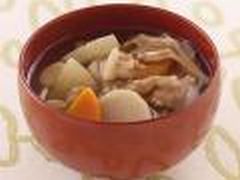Let's Plant Taro (Elephant Ears) in the Garden
Let's plant taro in the backyard or in a container garden.


What is Taro?
Taro is native to Tahiti, Hawaii, and tropical countries, especially in Southeast Asia. Taro is well known for its big leaves that resemble an elephant's ear.
You can plant it in your room with a container garden, too. It is delicious and more nutritious compared to other hard-to-plant vegetables. It is edible from its leaves to its corm.
Addressing Concerns About Taro's Acridity
Some people, and even some narrow-minded professors, claim that taro is poisonous due to its acrid compounds (an irritating property of the raw corm). This is a substance that irritates the tongue with needlelike crystals of calcium oxalate, which occur in the mucous membranes of the mouth and throat. However, today, many taro seedlings are cultivated using new plant technology that has eradicated these irritating substances.
Other researchers believe that additional chemicals may be involved in the acridity, intense itching, and burning sensation caused by raw taro. These chemicals are potentially injected into mucous membranes by the sharp-tipped calcium oxalate crystals.
Nutritional Powerhouse: The Benefits of Taro
Taro plants are rich in vitamins and minerals. A 100-gram serving of taro contains almost 0% fat and cholesterol, about 112 calories, 11 mg of sodium, and 2 g of protein. It also contains Vitamins A, C, E, and K, as well as iron, calcium, and many other nutrients.
More than 100 million people around the world are eating taro nowadays. It grows in wet soils in the humid tropics of many countries. In Japan, Korea, and China, we plant and consume taro practically in our daily diet with a variety of cooking methods, from cakes to main dishes. Taro crops can help with world hunger if we all join together.
Planting and Enjoying Taro
Let's start planting it in the backyard, or even in a small container garden. You don't have to worry about it during any season except winter. It can also be a beautiful addition to your garden or room.
In fact, I have planted taro since childhood, having inherited the habit of planting it from my uncle. Most of the time, our snack is boiled taro or taro made into cakes.
You can grind the taro and mash it with sugar, or add other ingredients to suit your taste. Bake it, toast it, or fry it—it's delicious any way you prepare it.
Here are some taro dish ideas:
 Fried Taro |
 Cream finish with chicken |
 Caramel finish |
 Beef and vegetable finish |
 Cooked with tomato |
 Shrimp with vegetable finish |
 Soy with spices |
 Steam with vegetables |
 Taro barbecue style |
|
In Europe, taro is roasted, boiled, or baked and made into cakes. Heating is one way to remove the acrid, irritating substance of the taro.
Taro for Digestive Health and More
Taro has a higher proportion of protein, calcium, and phosphorus than potatoes. It's rich in vitamins A and C, and it's highly digestible. Taro is also rich in amylase, which breaks down into sugar with saliva. It's excellent for people with digestive problems, and taro flour is often used in infant foods, especially for those with allergies like lactose intolerance.
Taro is also known as a good food for preventing tooth decay.
Taro: A Resilient Crop in a Polluted World
Furthermore, I've heard that taro is one of the few crops that remains relatively unaffected by pollution. These days, many crops are impacted by pollution—dioxin, toxins from insecticides, industrial chemical pollutants, nuclear radiation, and many others contaminate our food supply. You can eat taro without fear; it seems to be unaffected. Is that so? Please investigate.
What more could you ask for in a plant like taro?
Reprint Rights: You may reprint this article within your website, blog, or newsletter as long as the entire article remains the same as well as the “About the Author” box.



 Junji Takano is a Japanese health researcher involved in investigating the cause of many dreadful diseases. In 1968, he invented PYRO-ENERGEN, the first and only electrostatic therapy machine that effectively eradicates viral diseases, cancer, and diseases of unknown cause.
Junji Takano is a Japanese health researcher involved in investigating the cause of many dreadful diseases. In 1968, he invented PYRO-ENERGEN, the first and only electrostatic therapy machine that effectively eradicates viral diseases, cancer, and diseases of unknown cause.


